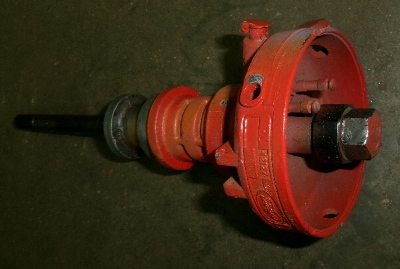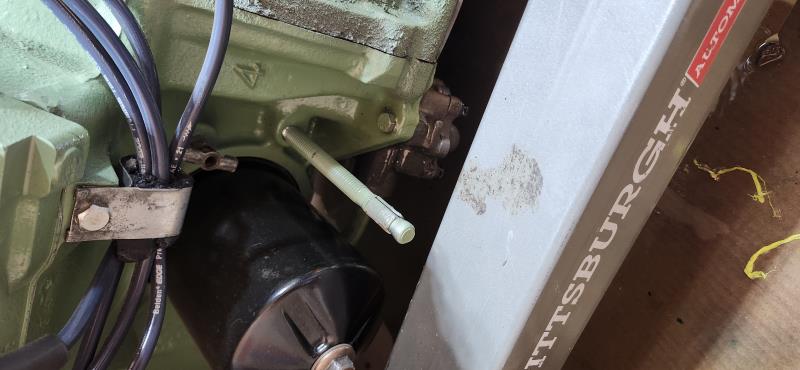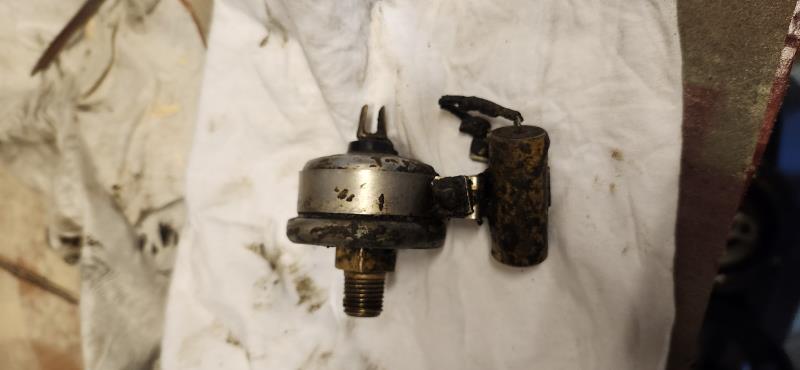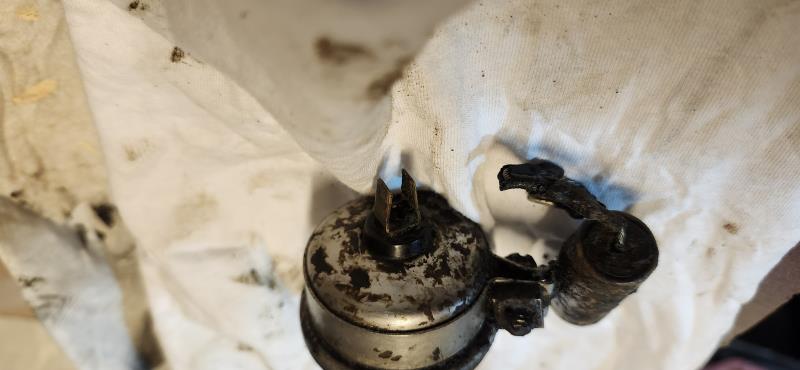|
Author
|
Message
|
|
Ted
|
|
|
Group: Administrators
Last Active: 6 hours ago
Posts: 7.5K,
Visits: 205.9K
|
KULTULZ (10/7/2024)
...Interesting. Why a dry filter and not an electric drill (will be my newly learned FACTOID of THE DAY).There’s no mess or spillage when installing the filter when it’s empty. I do prefer priming by hand with a speed handle rather than a drill as if there is problem with the oil pump meshing smoothly, you will feel it with the speed handle but not if you have a drill motor turning the pump. A case in point is a BBC engine that was being primed by hand prior to being installed on the dyno and it had an obvious tight spot when rotating the pump. Upon removing the oil pump, its housing had been heat warped when the customer brazed his oil pickup to the pump. That would not have been found if using a drill motor to turn the pump.B-rad (10/7/2024)
I see that the oil pump shaft is not centered in the hole in the block. That's why I'm not sure the socket is turning the shaft, it might be spinning on top of the shaft. Is there a trick to keep the shaft centered while putting the socket in the hole? Plus, it'll help putting the dizzy back in.Without a distributor lower shaft in the distributor pilot hole, it’s normal for the oil drive shaft to be lying to one side of the hole. Between the point or chamfer on the top of the oil pump drive shaft and the corresponding counter bore in the bottom of the distributor shaft, the two parts manage to align once the six sides of both the shaft and the distributor hole are aligned. For priming the oil system before an engines’ first start, I’ll use an old distributor that has the lower gear removed and a bolt welded to the top. With this, I can use a speed handle with the appropriate socket to turn the oil pump CCW for prelubing purposes. As mentioned earlier, it takes approximately 20 seconds to fill an empty oil filter and get a pressure reading on a gauge. Another 20-30 seconds will typically have oil at the rocker arms. Here's a picture of a distributor modified for oil priming purposes.
  Lorena, Texas (South of Waco) Lorena, Texas (South of Waco)
|
|
|
|
|
KULTULZ
|
|
|
Group: Forum Members
Last Active: 2 Weeks Ago
Posts: 1.8K,
Visits: 306.3K
|
" There’s no mess or spillage when installing the filter when it’s empty. I do prefer priming by hand with a speed handle rather than a drill as if there is problem with the oil pump meshing smoothly, you will feel it with the speed handle but not if you have a drill motor turning the pump."
... hmmpf ...
I never though of the pump binding.
APPRECIATED!, and this my LEARNED FACTOID of THE DAY.
Always something to learn here.
____________________________
|
|
|
|
|
B-rad
|
|
|
Group: Forum Members
Last Active: 2 Months Ago
Posts: 348,
Visits: 1.5K
|
I must've had a brain fart.  Found out that I had somehow put a bigger size socket on the extension so I was just spinning on top of the oil shaft. Put the correct size socket on and started spinning the oil pump. Soon after, I saw oil coming from a hole next to the oil filter. I'm sharing a picture of a long threaded rod i put in to stop the leak. The manual doesn't show what piece belongs there. Help please.
Brad
Sierra Vista Arizona
1954 Lincoln Capri
|
|
|
|
|
Ted
|
|
|
Group: Administrators
Last Active: 6 hours ago
Posts: 7.5K,
Visits: 205.9K
|
On the Ford Y, you will find the sending unit for the oil pressure light typically in that particular hole from the factory. I suspect the same was for the Lincoln Y or LYB engines. If you are getting your oil pressure reading from a different oil galley hole in the block, then a simple ¼” NPT plug in that particular hole will fix you up. Otherwise, hook up your oil light sending unit or an oil pressure gauge in that hole.
  Lorena, Texas (South of Waco) Lorena, Texas (South of Waco)
|
|
|
|
|
B-rad
|
|
|
Group: Forum Members
Last Active: 2 Months Ago
Posts: 348,
Visits: 1.5K
|
Is this the sending unit? Is there an easy way to test it while it's outta the car?   Brad
Brad
Sierra Vista Arizona
1954 Lincoln Capri
|
|
|
|
|
Ted
|
|
|
Group: Administrators
Last Active: 6 hours ago
Posts: 7.5K,
Visits: 205.9K
|
If it’s for a light, just check it with an ohm meter for continuity. If it’s for an oil pressure gauge, just check that there is some kind of ohm reading. Beyond that, just install it, hook up the wire, crank the engine, and see if you get a reading assuming it’s for a gauge.
  Lorena, Texas (South of Waco) Lorena, Texas (South of Waco)
|
|
|
|
|
B-rad
|
|
|
Group: Forum Members
Last Active: 2 Months Ago
Posts: 348,
Visits: 1.5K
|
Is this the oil pressure sending unit? It seems to be just a tad too big to fit in the hole. And that's that thing attached to it for?
Brad
Sierra Vista Arizona
1954 Lincoln Capri
|
|
|
|
|
alanfreeman
|
|
|
Group: Forum Members
Last Active: 2 hours ago
Posts: 368,
Visits: 5.5K
|
Yes, that is the sending unit for the oil pressure gauge in the dash. The device attached to the sender is a condenser.
|
|
|
|
|
B-rad
|
|
|
Group: Forum Members
Last Active: 2 Months Ago
Posts: 348,
Visits: 1.5K
|
What's the condenser first? What foes it hook up to?
Brad
Sierra Vista Arizona
1954 Lincoln Capri
|
|
|
|
|
Ted
|
|
|
Group: Administrators
Last Active: 6 hours ago
Posts: 7.5K,
Visits: 205.9K
|
B-rad (10/10/2024)
What's the condenser for? What does it hook up to?My thought is to hook up the gauge wire to the sending unit first without the condenser. If the gauge reading is inconsistent or fluctuates, then hook up the condenser. There are two terminals on the sending unit and I suspect one of them was for the condenser.
  Lorena, Texas (South of Waco) Lorena, Texas (South of Waco)
|
|
|
|